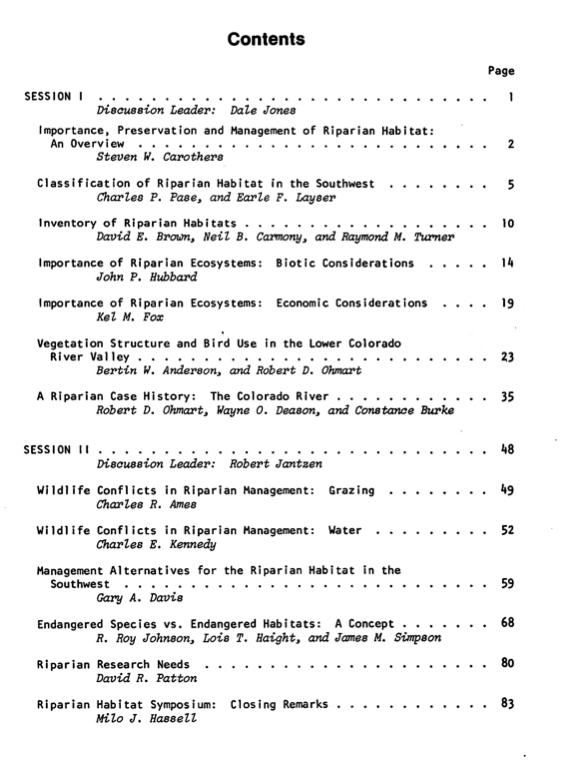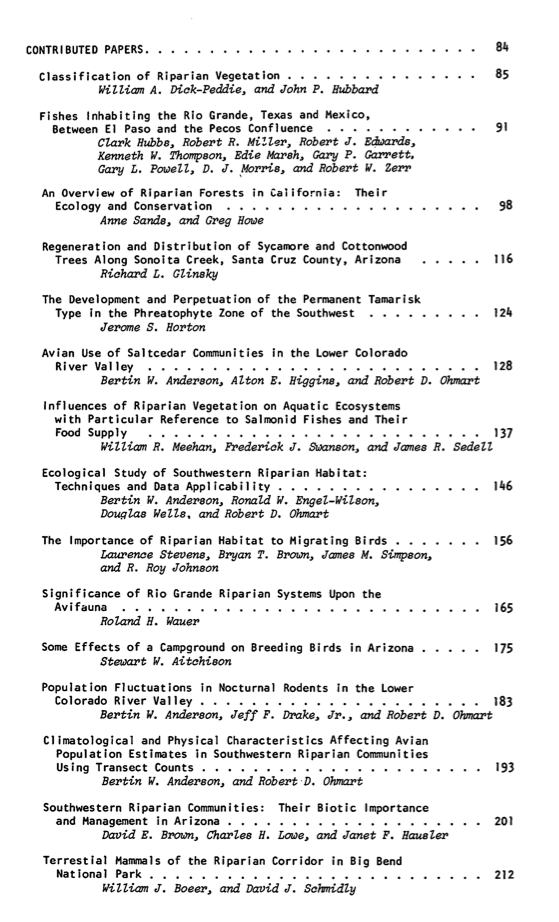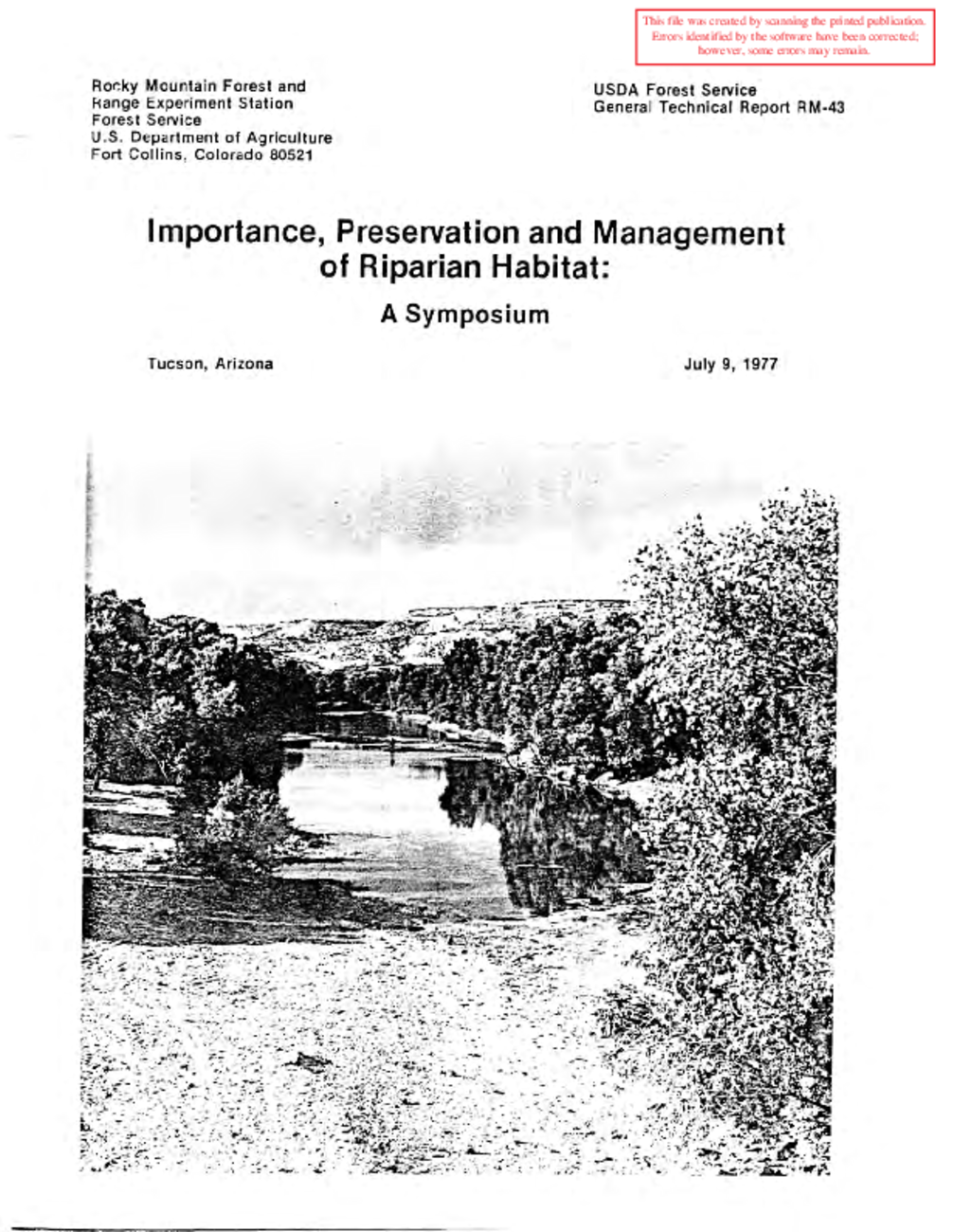Importance, Preservation and Management of Riparian Habitat: A Symposium, July 9, 1977
Held in Tucson, Arizona.
Foreward:
The material offered in this symposium is both urgently needed and late in coming. Only in very recent years have scientists and managers begun to shift their perspective on riverine systems away from localized, single- practice values toward a broader, more cooperative and ecological set of approaches.
The dearth of relative and detailed historic data on riparian habitats is lamentable. We begin investigations on a complex and closely interwoven ecosystem without a reliable baseline. Much of our knowledge to date focuses on the aftermath of decades of abuse. But armed with this hindsight, we are beginning to collect, organize and apply hard data to difficult problems. What percentage of breeding birds are dependent on riparian habitat? How much grazing is too much? How many species of plants occur only in riverine ecosystems?
We have begun the long and expensive task of quantifying our generalities about the riparian habitat, so that we can offer valid alternatives to managers in their attempts to preserve the scant remnants of what was once a vast network of thriving and varied habitats.
Agencies and individuals that favored cutting, grazing, damming, and channelizing were opposed by those who favored preserving intact areas that supported unique plant and animal species, or were of high recreational or esthetic value. We are beginning to reevaluate both these polarized positions, realizing that entire riverine systems cannot be solely maintained for a single interest, whether it be water salvage or the remnant population of a species endangered by our activities.
This symposium stresses the continuity and interrelationships of riparian ecosystems, their wildlife and vegetation, historic and current uses. We have designed this proceedings to bring together material that represents the current state of knowledge, and to point out directions for the next critical steps in the interlocking problems of research and management.
This symposium and its proceedings evolved after much planning. Some individuals on the steering committee have discussed a symposium such as this for several years. However, with riparian research and management still in its infancy, only recently has a good symposium seemed possible. Even now many of the prominant researchers and managers whom we contacted during the preparation of the symposium felt that their grasp of the workings of riparian ecosystems was still inadequate. We found research projects and management plans developing as rapidly as the state of the art allows in the western United States, especially the arid Southwest. And although subjects such as river recreation are developing rapidly in the eastern United States (see Proceedings, River recreation management and research symposium January 24-27, 1977, General Technical Report NC-28, North Central For. Exp. Stn., Minneapolis, Minn.) one is hard pressed to find riparian projects east of the Rocky Mountains, except for those associated with the continuing destruction of even more riverine ecosystems.
We predict that by the early 1980's research projects currently being planned and undertaken will lead to a vast expansion in the knowledge necessary to properly manage riparian ecosystems. In 3 to 5 years, a full-scale workshop on sophisticated means of research, preservation, and management of riparian habitat seems possible. Today we offer a relatively primitive state of the art in the "importance, preservation, and management of riparian habitat." If our predictions are correct, this science will have developed from a newly born discipline into pro- gressing maturity within two decades. Far- sighted men like the late Douglas C. Morrison, to whose memory this symposium is dedicated, will have played a major role in the birth of scientific management of riparian habitat.
R. Roy Johnson



